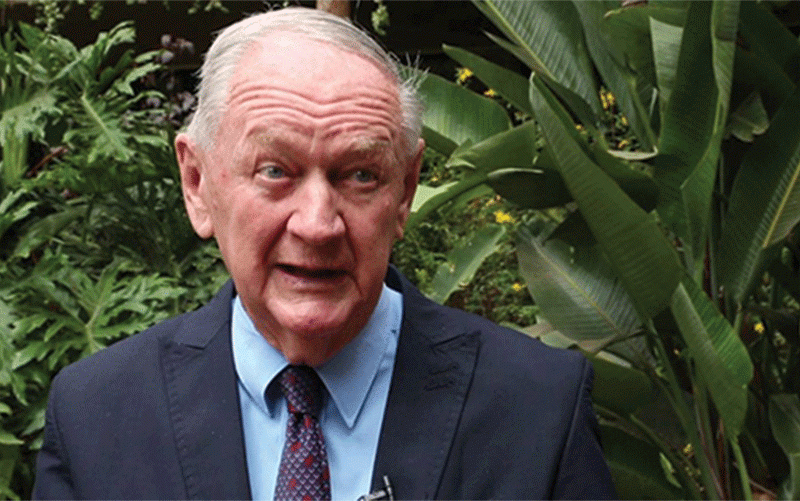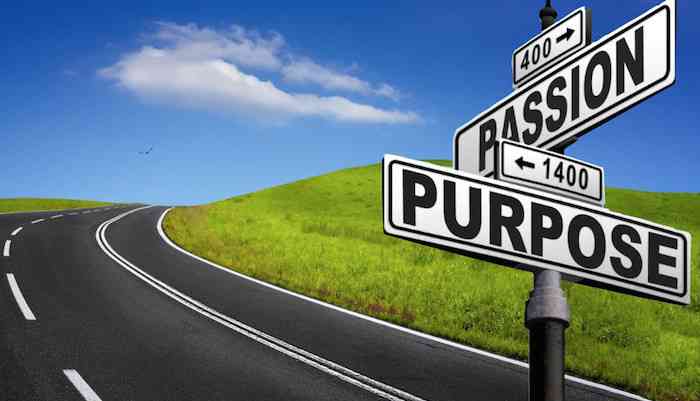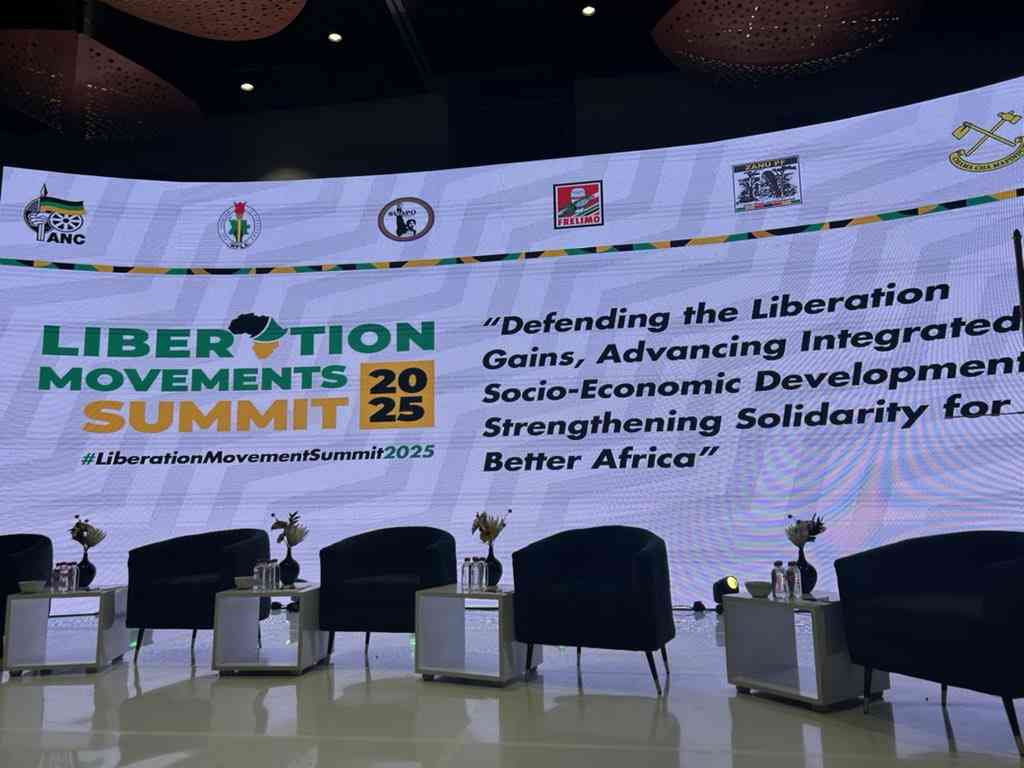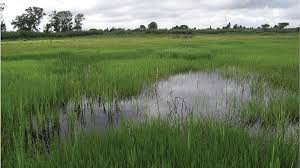
THE spectacle in this part of the world of the great Victoria Falls bone dry for most of its length, is always disturbing.
This year it is compounded by the fact that the massive Kariba Dam, still the largest manmade lake in the world, is unable to feed more than one turbine at the dam wall and we can walk across the Zambezi River below the wall towards Chirundu.
The Kafue has suffered the same fate and Zambia is down to a few hours of power per day. Even the Caborra Bassa Dam in Mozambique is struggling to maintain power production.
In South Africa, the long-predicted water crisis is being felt in major urban centres. We are building another dam in Zimbabwe on the Lundi River for the main purpose of feeding a 1 000 kilometre pipeline delivering water to South African cities on the Highveld.
They hit a peak in terms of agricultural production some years ago and can no longer meet their own needs for timber and are being forced to reduce citrus production.
This phenomenon is being experienced across the globe. If the growing water shortage is not managed in South Africa it is going to threaten existing and future economic activity.
To some extent, what seems like a reduction in precipitation and the changes taking place in the weather are responsible.
The spectacle this year of the greening of the Sahara Desert because the Intertropical rainfall zone across Africa went north this year for the first time in 50 years, is another symptom of what is happening.
- Botswana-based rugby ace Nyameni eyes Zim callup
- Botswana-based rugby ace Nyameni eyes Zim callup
- Stampede for Zim oilfields... US$17m raised ahead of landmark drill
- Africa's oldest dinosaur found in Zimbabwe
Keep Reading
Floods were reported in Mali where children grow up learning about rain only in their classrooms.
The accelerated growth in our urban populations, as people leave the rural farmlands for the cities and towns is yet another factor.
In Zimbabwe our urban population has risen in an environment where we seldom see water coming out of a tap in our homes and gardens.
Bulawayo has a perennial problem with water and is down to severe rationing right now. In Harare it's not so much a shortage of water as simply bad management of what there is available.
For many, the issue is climate change, but is it?
The human impact on our environment takes many different forms.
In the case of our Zambezi River system, it rises in the very north of Zambia as a tiny spring, and then meanders down the continent through the Congo basin, then Zambia and then across the top of Zimbabwe finally emptying its flood into the Indian Ocean off the Mozambique coast.
On the way it feeds the largest wetlands in the world in Barotseland and the Caprivi Strip and then cuts its way back through a layer of black basalt that covers much of the land through which it has flowed for centuries.
Some years ago, I took my family on a fishing trip in the Caprivi Strip — we crossed the Chobe River and then ran for 35 kilometres through a flood plain covered by reeds metres tall.
Our road was a narrow channel cut by hippos through the flood plain and into which the wetlands poured the water overflow from the mighty Zambezi several kilometres to our right.
When finally, we ran out of water for our small boat, we turned around and drifted back on the rushing water pouring out of the reeds on both sides.
We caught lots of fish, but in the whole day, we saw only one small crocodile and not a single hippo until we got back to the Chobe. I was told in Botswana, that if anything crossed the Chobe into Namibia it was shot and eaten in days.
I wondered what would happen if those narrow drainage channels choked up, how the water of the flood plains would get back into the Zambezi River system?
The Zambezi peaks in April and May each year, months after the rains because the floods of the summer overflow the banks into the massive flood plains on both sides of the river.
I have not been up there myself, but friends have travelled to the upper reaches of the river and report that they do not see a single Hippo.
Lower down the river they are found in their hundreds because they are protected, and the riverbanks are eaten flat by these great herbivores. I wonder if what is happening up there is that the natural drainage system is being choked with weed and reeds.
The other factor is the rampant cutting of indigenous trees for export to Europe and the Far East. Huge swathes of riverine forest have disappeared. Coupled to the massive fires that burn Africa every year, this has reduced ground cover and therefore water retention during the annual rains.
The use of charcoal in many African States as a fuel for cooking in urban areas, further compounds this problem. I see this in the vast hardwood forests of northern Matabeleland in Zimbabwe.
These cover millions of hectares but bear no resemblance to what they were when I was a child. What makes this even worse is that they are on what was part of the desert that now covers much of Botswana and is itself growing at a kilometre a year.
At one time in history, the Sahara Desert was the breadbasket of Europe and mainly open Savannah.
Now it is just sand and rock with temperatures so high that any rain that falls evaporates in hours.
The Sahara keep marching south on an annual basis. I recall flying to Europe on a daylight flight and was shocked at how quickly we traversed from green forest to dry desert sand.
The desertification of the north of Africa is due to the nomadic nature of the economies with cattle and sheep and goats the main culprits.
They must range over the land without restraint to survive.
The complete absence of any form of tenure is responsible, the land is a common good, owned by no one and no one looks after it. No one fights the fires or cuts fire breaks. No one manages the open fragile pastures of the Savannah.
Under management these vast areas would rapidly heal themselves and become productive. Rivers and streams would flow again, that not theory, I have seen it happen.
But it is our towns and cities that need the most urgent attention. Water delivery and distribution systems are old and collapsing. More than half the water we clean and supply in bulk goes to waste.
We do not recycle our wastewater. In many countries recycling wastewater is automatic as sewerage pours into rivers that are then used over and over again for urban water supply. In dry countries where water has long been accepted as a limited resource, water recycling is mandatory.
Namibia and Botswana are examples.
Harare, the capital city of Zimbabwe and home to over 6 million people has long been in crisis.
All its sewerage goes into its water supply, captured by dams and cleaned up and recycled.
Enough water is available for everyone to have an adequate supply, but the distribution system is so badly maintained that over half the water coming into the City is lost to leakages.
Bulawayo simply does not have enough raw water stored or the bulk supply system to meet its needs.
It used to build a new dam every five years, but this stopped at Independence when the State took over bulk supply.
Its wastewater simply flows into rivers that drain a way to the Zambezi in the north.
Wild schemes to draw water from the Zambezi are floated but are impossibly expensive. It's also not needed if we only made better use of what is already there.
What none of us can do is ignore that we have a problem, and if we do not fix it, it will make life on earth much more difficult than it need be.
— https://www.eddiecross.africanherd.com/ Eddie Cross is an economist.











